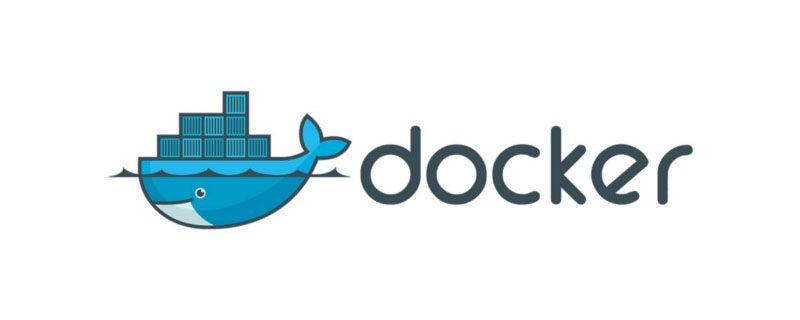 Java
Java javaTutorial
javaTutorial Improve development efficiency and reduce resource costs: the combination strategy of Docker and Spring Boot
Improve development efficiency and reduce resource costs: the combination strategy of Docker and Spring Boot
Improve development efficiency and reduce resource costs: Combination strategy of Docker and Spring Boot
Introduction:
With the continuous development of software development, the development team is faced with The dual challenges of improving development efficiency and reducing resource costs. In order to cope with this challenge, many development teams have begun to adopt containerization technology, especially the combination of Docker and Spring Boot.
1. What are Docker and Spring Boot?
- Docker:
Docker is an open source containerization platform that can encapsulate applications and their dependent components into a portable container for easy development, delivery and deployment. - Spring Boot:
Spring Boot is a framework for building independent, executable Spring applications. It simplifies the development and deployment process of Spring applications and provides a lot of functionality out of the box.
2. Why combine Docker and Spring Boot?
- Improve development efficiency:
Combining Docker and Spring Boot, the development team can uniformly encapsulate the development and testing environments into containers. Through the rapid deployment and startup of the containers, the developer's workload is greatly reduced. waiting time, thus improving development efficiency. - Simplified environment configuration:
Using Docker and Spring Boot, the development team can package the application and its dependent components into a container, avoiding the cumbersome environment configuration process and providing a more simplified Deployment and testing methods. - Resource isolation and resource utilization:
Docker provides powerful isolation performance. Each container has its own independent running environment and will not affect each other. Using the combination of Docker and Spring Boot, applications and their dependent components can be deployed in different containers, making full use of system resources and improving resource utilization. - Provide scalability and elasticity:
Through Docker's containerization technology, applications can be easily expanded horizontally, that is, by increasing the number of containers to increase the processing capacity of the system. At the same time, if there is a problem with a certain container, a new container can be quickly started to replace it, ensuring the high availability and resilience of the system.
3. Combination strategy of Docker and Spring Boot
- Building Docker image:
Applications built using Spring Boot can be packaged into an executable jar file , and then define the process of building the image through Dockerfile. In the Dockerfile, you can specify the base image, copy jar files, expose ports, set startup commands, etc.
Sample Dockerfile:
FROM openjdk:8-jdk-alpine COPY target/my-application.jar my-application.jar EXPOSE 8080 CMD ["java", "-jar", "my-application.jar"]
- Use Docker Compose to manage multiple containers:
In actual development, it is usually necessary to run multiple containers at the same time, such as database containers, Message queue container, etc. Docker Compose is a tool for defining and running multiple Docker containers. You can define the configuration of multiple containers through a docker-compose.yml file, and start, stop, restart, etc. through a command.
Sample docker-compose.yml file:
version: '3'
services:
myapp:
build: .
ports:
- 8080:8080
depends_on:
- database
database:
image: mysql:5.7
environment:
MYSQL_ROOT_PASSWORD: mysecretpassword- Use Docker containers for continuous integration and continuous deployment:
Combining Docker and Spring Boot can be easily done Continuous integration and continuous deployment. By packaging the application and its dependent components into Docker images, you can ensure that the same image is used for deployment in different environments, reducing configuration inconsistencies during the deployment process.
4. Conclusion
Combining Docker and Spring Boot can improve development efficiency, simplify environment configuration, provide resource isolation and resource utilization, provide scalability and elasticity, and many other advantages. Through reasonable strategies and practices, development teams can better cope with challenges, improve development efficiency, and reduce resource costs.
The above are strategies on how to combine Docker and Spring Boot. I hope these examples can help readers understand and apply this technology combination to further improve the efficiency and quality of software development.
The above is the detailed content of Improve development efficiency and reduce resource costs: the combination strategy of Docker and Spring Boot. For more information, please follow other related articles on the PHP Chinese website!
 docker中rm和rmi有什么区别Jul 14, 2022 am 11:02 AM
docker中rm和rmi有什么区别Jul 14, 2022 am 11:02 AMdocker中rm和rmi的区别:rm命令用于删除一个或者多个容器,而rmi命令用于删除一个或者多个镜像;rm命令的语法为“docker rm [OPTIONS] CONTAINER [CONTAINER...]”,rmi命令的语法为“docker rmi [OPTIONS] IMAGE [IMAGE...]”。
 docker官方镜像有哪些May 12, 2022 pm 02:23 PM
docker官方镜像有哪些May 12, 2022 pm 02:23 PMdocker官方镜像有:1、nginx,一个高性能的HTTP和反向代理服务;2、alpine,一个面向安全应用的轻量级Linux发行版;3、busybox,一个集成了三百多个常用Linux命令和工具的软件;4、ubuntu;5、PHP等等。
 docker容器重启后数据会丢吗Jun 17, 2022 am 10:41 AM
docker容器重启后数据会丢吗Jun 17, 2022 am 10:41 AMdocker容器重启后数据会丢失的;但是可以利用volume或者“data container”来实现数据持久化,在容器关闭之后可以利用“-v”或者“–volumes-from”重新使用以前的数据,docker也可挂载宿主机磁盘目录,用来永久存储数据。
 docker是免费的吗Jul 08, 2022 am 11:21 AM
docker是免费的吗Jul 08, 2022 am 11:21 AMdocker对于小型企业、个人、教育和非商业开源项目来说是免费的;2021年8月31日,docker宣布“Docker Desktop”将转变“Docker Personal”,将只免费提供给小型企业、个人、教育和非商业开源项目使用,对于其他用例则需要付费订阅。
 docker能安装oracle吗Jul 08, 2022 pm 04:07 PM
docker能安装oracle吗Jul 08, 2022 pm 04:07 PMdocker能安装oracle。安装方法:1、拉取Oracle官方镜像,可以利用“docker images”查看镜像;2、启动容器后利用“docker exec -it oracle11g bash”进入容器,并且编辑环境变量;3、利用“sqlplus /nolog”进入oracle命令行即可。
 docker存储空间不足怎么办Jul 22, 2022 pm 03:44 PM
docker存储空间不足怎么办Jul 22, 2022 pm 03:44 PM解决方法:1、停止docker服务后,利用“rsync -avz /var/lib/docker 大磁盘目录/docker/lib/”将docker迁移到大容量磁盘中;2、编辑“/etc/docker/daemon.json”添加指定参数,将docker的目录迁移绑定;3、重载和重启docker服务即可。
 docker容器管理ui有哪些May 11, 2022 pm 03:39 PM
docker容器管理ui有哪些May 11, 2022 pm 03:39 PM容器管理ui工具有:1、Portainer,是一个轻量级的基于Web的Docker管理GUI;2、Kitematic,是一个GUI工具,可以更快速、更简单的运行容器;3、LazyDocker,基于终端的一个可视化查询工具;4、DockStation,一款桌面应用程序;5、Docker Desktop,能为Docker设置资源限制,比如内存,CPU,磁盘镜像大小;6、Docui。
 什么是docker最早支持的存储引擎May 12, 2022 pm 03:27 PM
什么是docker最早支持的存储引擎May 12, 2022 pm 03:27 PMAUFS是docker最早支持的存储引擎。AUFS是一种Union File System,是文件级的存储驱动,是Docker早期用的存储驱动,是Docker18.06版本之前,Ubuntu14.04版本前推荐的,支持xfs、ext4文件。


Hot AI Tools

Undresser.AI Undress
AI-powered app for creating realistic nude photos

AI Clothes Remover
Online AI tool for removing clothes from photos.

Undress AI Tool
Undress images for free

Clothoff.io
AI clothes remover

AI Hentai Generator
Generate AI Hentai for free.

Hot Article

Hot Tools

Safe Exam Browser
Safe Exam Browser is a secure browser environment for taking online exams securely. This software turns any computer into a secure workstation. It controls access to any utility and prevents students from using unauthorized resources.

PhpStorm Mac version
The latest (2018.2.1) professional PHP integrated development tool

MinGW - Minimalist GNU for Windows
This project is in the process of being migrated to osdn.net/projects/mingw, you can continue to follow us there. MinGW: A native Windows port of the GNU Compiler Collection (GCC), freely distributable import libraries and header files for building native Windows applications; includes extensions to the MSVC runtime to support C99 functionality. All MinGW software can run on 64-bit Windows platforms.

WebStorm Mac version
Useful JavaScript development tools

mPDF
mPDF is a PHP library that can generate PDF files from UTF-8 encoded HTML. The original author, Ian Back, wrote mPDF to output PDF files "on the fly" from his website and handle different languages. It is slower than original scripts like HTML2FPDF and produces larger files when using Unicode fonts, but supports CSS styles etc. and has a lot of enhancements. Supports almost all languages, including RTL (Arabic and Hebrew) and CJK (Chinese, Japanese and Korean). Supports nested block-level elements (such as P, DIV),





